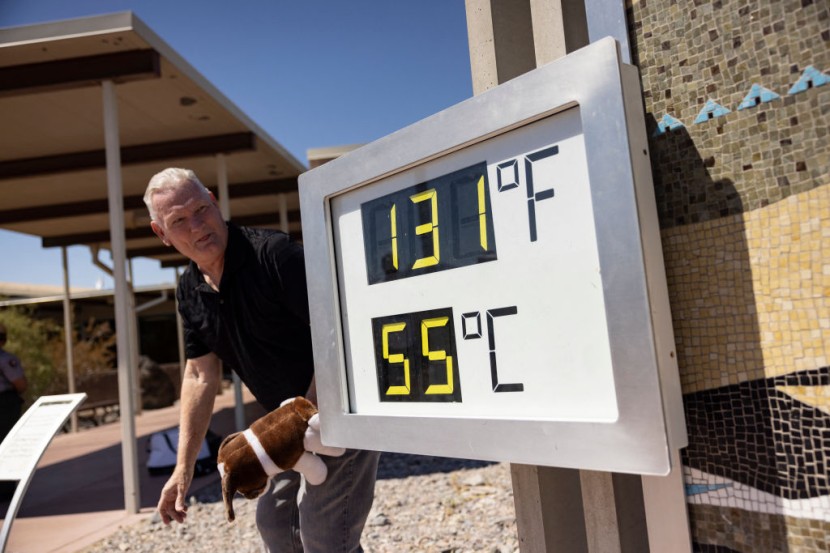
Extreme heat is believed to have killed a motorcyclist in Death Valley National Park as temperatures there soared to record levels over the weekend.
The unidentified biker was traveling with five others who were sickened by the brutal weather, with one requiring hospitalization, park officials said Sunday.
Their deadly ride through America's hottest national park took place on Saturday, when the temperature reached 128 degrees, breaking the previous record of 127 degrees set in 2007, according to the National Park Service.
The heat prevented emergency medical helicopters from responding to the scene near Badwater Basin because they can't fly safely when the temperature exceeds 120 degrees, officials said.
Conditions in the park were even harsher on Sunday, when the temperature reached a new record level of 129 degrees, according to data posted online by the National Weather Service.
Photos of tourists posing by a digital thermometer on Sunday showed an even higher, unofficial temperature of 131 degrees.
An excessive heat warning for the park is in effect through 11 p.m. Thursday, with the National Weather Service forecasting daily high temperatures between 126 and 129 degrees and nighttime lows of 99 degrees.
"High heat like this can pose real threats to your health," park Superintendent Mike Reynolds said in a prepared statement. "While this is a very exciting time to experience potential world record setting temperatures in Death Valley, we encourage visitors to choose their activities carefully, avoiding prolonged periods of time outside of an air-conditioned vehicle or building when temperatures are this high."
Park officials noted that riding motorcycles through Death Valley is especially dangerous due to the "necessary heavy safety gear worn to reduce injuries during an accident."
Death Valley, which covers 3.4 million acres in southeastern Califoria and a small part of southwestern Nevada, is the lowest, hottest and driest place in North America.
It got its name after a group of pioneers got lost there after heading west to prospect for gold in 1849.
One man died and when the group was finally able to climb out of the valley over the Panamint Mountains, another one looked back and said, "Goodbye, Death Valley," according to the National Park Service.
© 2025 HNGN, All rights reserved. Do not reproduce without permission.




